
Chile, Atacama Desert, June-July 2011: Petroglyphs, Rainbow Valley, San Pedro, Laguna Chaxa flamingos, and Toconao
Page 3 of 7
![]()
The guide here, David Bonilla of Cosmo Andino, was also recently scouting out locations on behalf of National Geographic, who were later to come to observe a rare flamingo species. |
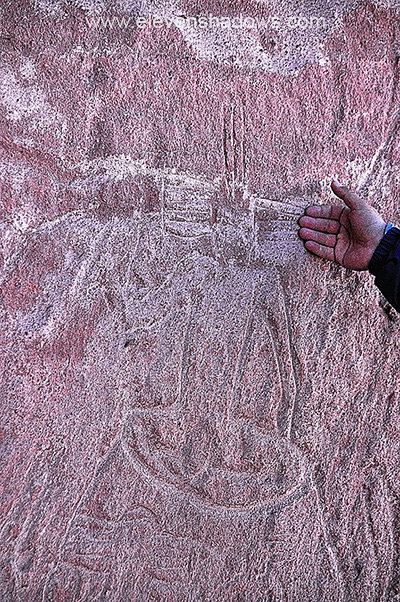 David describes one of the stranger Atacameño petroglyphs. Now, clearly to me, this is an extraterrestrial, something Erich von Däniken might froth at the mouth over, but you might think differently. But you'd be wrong. :D
David describes one of the stranger Atacameño petroglyphs. Now, clearly to me, this is an extraterrestrial, something Erich von Däniken might froth at the mouth over, but you might think differently. But you'd be wrong. :D |
 Next was nearby Valle de Arcoires, or Rainbow Valley, a series of hills that display countless colors, from white to black, from blue to red, a mineralogist's fantasy. And speaking of extraterrestrials, this would have been a fantastic region for Gene Roddenberry to have filmed the Star Trek episode where Captain Kirk battles the Gorn lizard-man. Then again, Vasquez Rocks wasn't too bad either. Next was nearby Valle de Arcoires, or Rainbow Valley, a series of hills that display countless colors, from white to black, from blue to red, a mineralogist's fantasy. And speaking of extraterrestrials, this would have been a fantastic region for Gene Roddenberry to have filmed the Star Trek episode where Captain Kirk battles the Gorn lizard-man. Then again, Vasquez Rocks wasn't too bad either. |
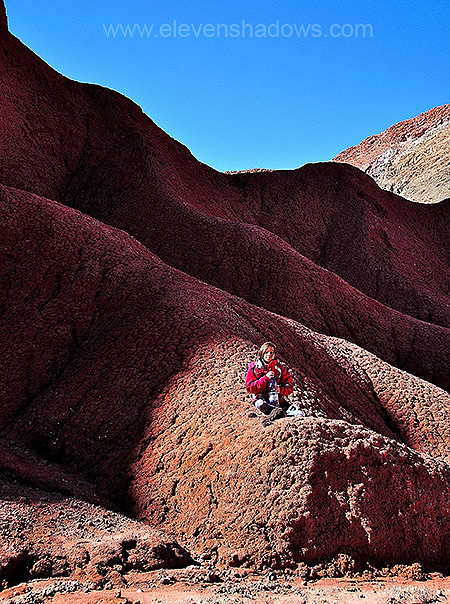 Basking in the winter sun at the Valle de Arcoires, or Rainbow Valley. Basking in the winter sun at the Valle de Arcoires, or Rainbow Valley. |
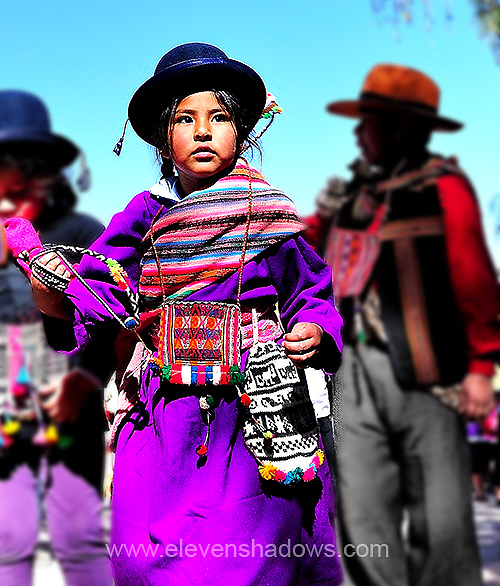 Fiesta de San Pedro: If you guessed that the Fiesta de San Pedro would be a big thing in a town called San Pedro, you'd be right. After returning from Valle de Arcoires, I went to the mostly outdoor festival honoring the patron saint of the town and founder of the Catholic church. The fiesta begins with a liturgical ceremony in which the saint's image is carried through the narrow streets, followed by numerous Andean processions featuring bulls, colorful folk costumes, and dancing. Fiesta de San Pedro: If you guessed that the Fiesta de San Pedro would be a big thing in a town called San Pedro, you'd be right. After returning from Valle de Arcoires, I went to the mostly outdoor festival honoring the patron saint of the town and founder of the Catholic church. The fiesta begins with a liturgical ceremony in which the saint's image is carried through the narrow streets, followed by numerous Andean processions featuring bulls, colorful folk costumes, and dancing. |
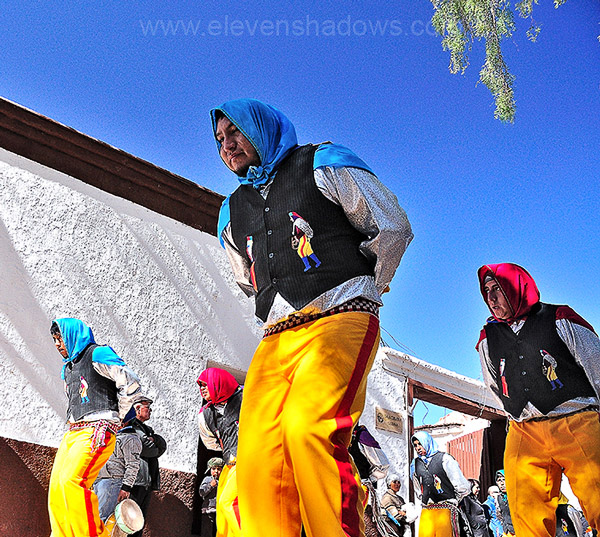 The Fiesta de San Pedro on Calle Toconao, near San Pedro's plaza. The Fiesta de San Pedro on Calle Toconao, near San Pedro's plaza. |
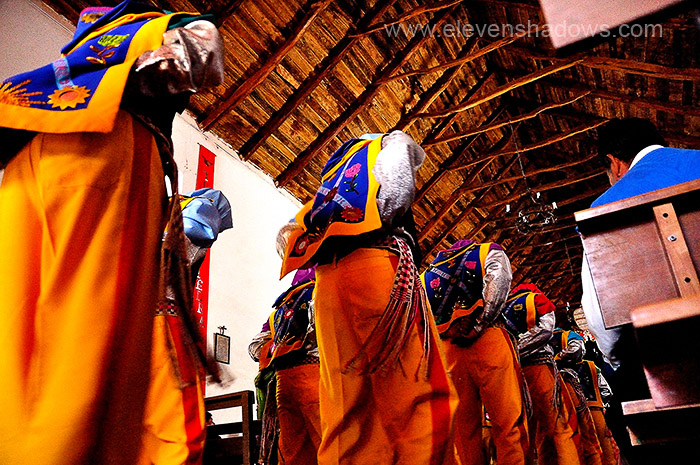 The procession for the fiesta moved inside the San Pedro church, built in 1744. You can see the rustic ceiling, made of cardon cactus slats and algarrobo beams with leather binding. The procession for the fiesta moved inside the San Pedro church, built in 1744. You can see the rustic ceiling, made of cardon cactus slats and algarrobo beams with leather binding. |
I also changed money on Calle Toconao. They had a llama with sunglasses, "una llama moderna," as the woman joked. And I did mention before that you'd get one more photo of a llama, didn't I? |
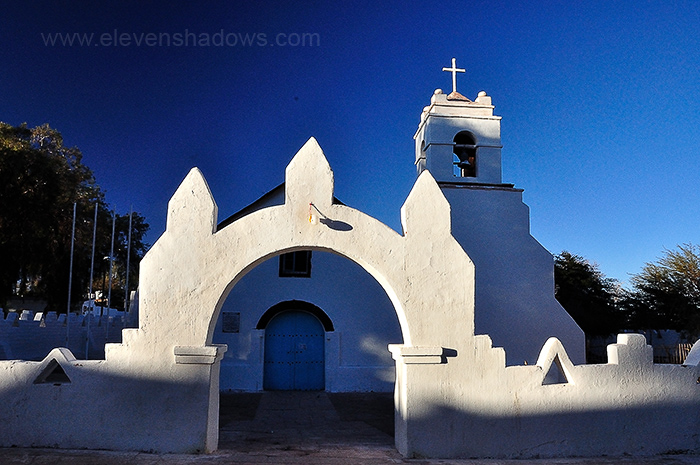 The San Pedro Church during the early 6pm south-of-the-equator Chilean sunset. The church was originally built in 1744, and although it has had its share of fires and calamity, it has been rebuilt, with some guidebooks suggesting that it is one of the most attractive churches in North Chile. The San Pedro Church during the early 6pm south-of-the-equator Chilean sunset. The church was originally built in 1744, and although it has had its share of fires and calamity, it has been rebuilt, with some guidebooks suggesting that it is one of the most attractive churches in North Chile. |
There are many dogs roaming the streets, particularly at night. Some locals jokingly refer to the small town as San Perro de Atacama (perro means "dog" in Spanish). |
There are many roadside shrines in the Atacama Desert, signifying that someone has died here. Disconcertingly, many of them on the highways exist on straight lengths of the highway. |
~~~ 3 julio, domingo: I went to Laguna Chaxa in the Los Flamencos National Reserve to observe a couple of species of flamingos that frequent the lagoons and salt flats here. We got there early before the other tour companies scared away the flamingos.
|
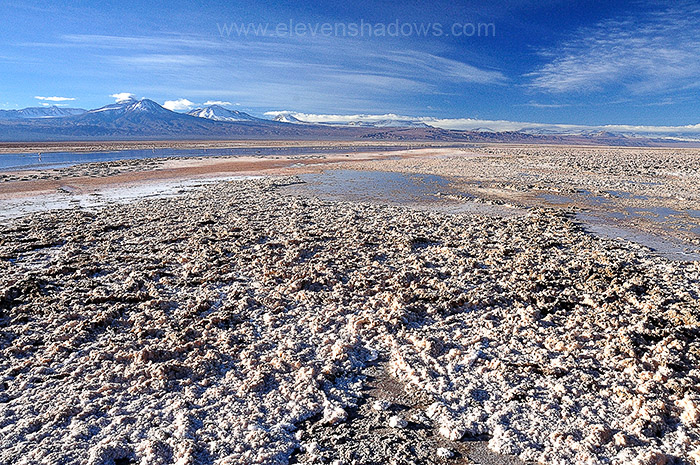 Laguna Chaxa sits next to very large salt plains, left from when the land was submerged underwater before earthquakes shoved the earth skyward into what is now the Andes Mountain range. Although it looks like muddy snow, it really is salt.This reminded me a lot of Death Valley in California, although the region in general reminded me of the salt plains that my cousin Simin and I visited near Arequipa in Peru. Laguna Chaxa sits next to very large salt plains, left from when the land was submerged underwater before earthquakes shoved the earth skyward into what is now the Andes Mountain range. Although it looks like muddy snow, it really is salt.This reminded me a lot of Death Valley in California, although the region in general reminded me of the salt plains that my cousin Simin and I visited near Arequipa in Peru. |
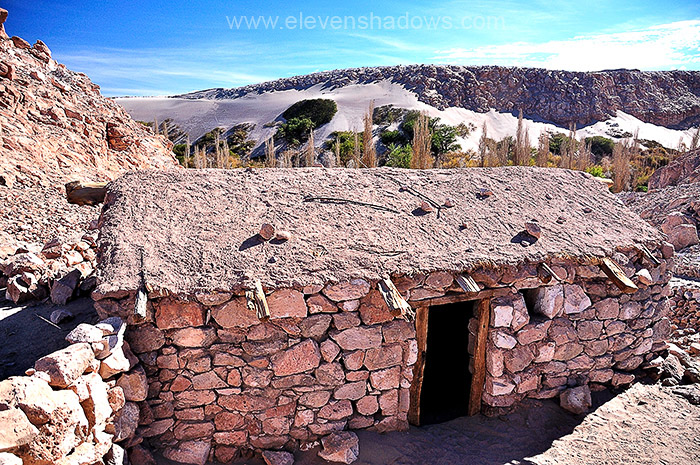 A recreated house that was typical of Pre-Columbian homes built near the village of Toconao, a peaceful oasis of fruit trees, herbs, flowers, and, believe it or not, even vineyards, all set in a large rocky canyon.
A recreated house that was typical of Pre-Columbian homes built near the village of Toconao, a peaceful oasis of fruit trees, herbs, flowers, and, believe it or not, even vineyards, all set in a large rocky canyon. |
|
|
Ken's photos of Nobel Peace Prize Winner Aung
San Suu Kyi, as well as photos of Peru, Burma, India, Morocco, China, Thailand,
Ghana, Ecuador, and elsewhere, have appeared in many books, magazines,
websites, and galleries. Visit the
Ken Lee Photography Website. Some of Ken's select photos may be
purchased through his
Imagekind Store. |
Chile, Atacama Desert, June-July 2011
Page 3 of 7
Eleven Shadows Travel Page
Contact photographer/musician Ken Lee